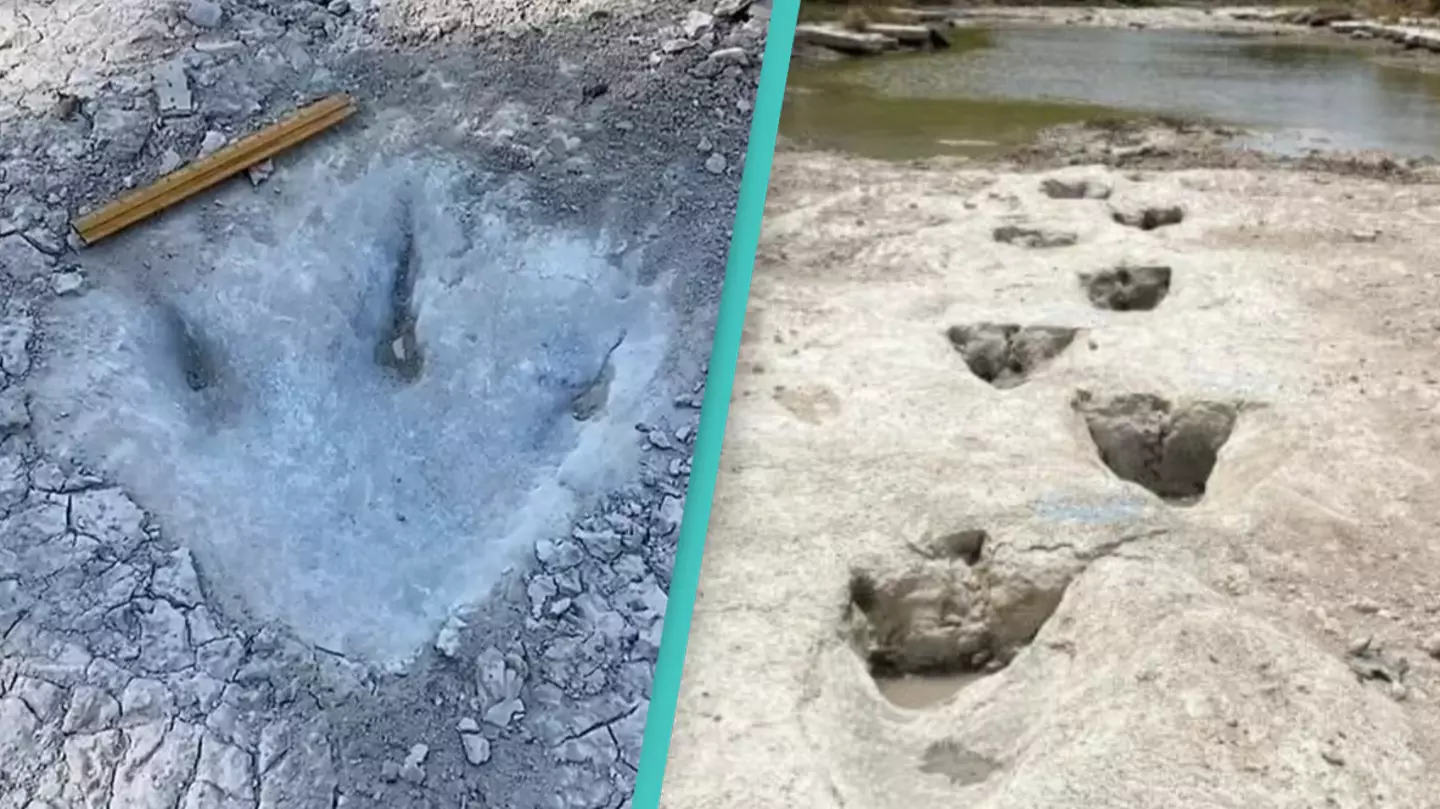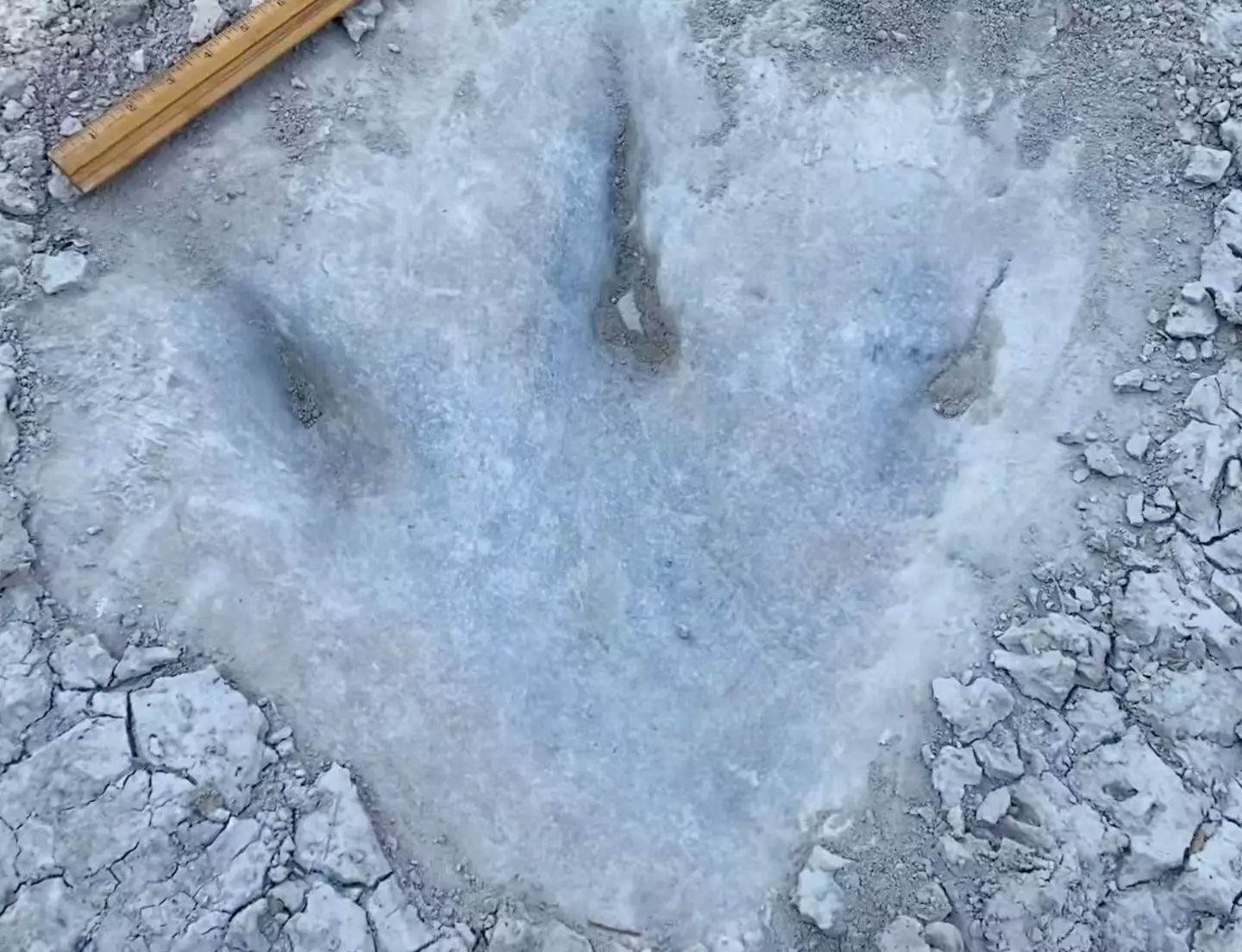
Dinosaur tracks dating back to over 113 millions years ago have been uncovered.
Over the past week, more than half of Texas has been suffering from severe drought, and it has caused the river running through Dinosaur Valley State Park in Glen Rose to dry up, revealing huge footprints.
In a video posted to the park's Facebook page, the river is completely dried out, and the large prints can be seen in a huge cluster.
Advert
Have a look for yourself:
Sharing the footage, the park wrote: "After The Drought of 2022 Huge Dinosaur Tracks Appear in the Paluxy River at Dinosaur Valley State Park. B.P. Baker Site.
"Normally these are under water and mud."
Advert
Staff confirmed the discovery in a statement, revealing that tracks belonging to two species of dinosaur were uncovered.
Talking to CNN, park spokesperson Stephanie Salinas Garcia said: "Most tracks that have recently been uncovered and discovered at different parts of the river in the park belong to Acrocanthosaurus.
"This was a dinosaur that would stand, as an adult, about 15 feet tall and (weigh) close to seven tons."
As well as the Acrocanthosaurus, the park also came across prints from the Sauroposeido, which would have stood at an incredible 60ft tall and weighed around 44 tonnes.
Advert

Back in 2020, giant dinosaur footprints, thought to be around 168 million years old, were discovered on the ceiling of a cave in France.
The prints were found by a team of researchers from the University of Burgundy–Franche-Comté during an expedition in the Castelbouc Cave.
The prints were once on the ground but over the years they’ve been ‘buried’, therefore making them appear on the roof of the cave.
Advert
They are thought to have belonged to sauropods, which were thirty-metre-long herbivorous dinosaurs that were notable for theor long necks.
In the study, the prints were described by the researchers as being 'very well preserved'.
Part of the study read: "The trackmakers are hypothesised to be titanosauriforms. Some of the tracks are extremely well preserved and show impressions of digits, digital pads, and claws. […]
"The tracks from Castelbouc attest the presence of sauropods in proximal littoral environments during the Middle Jurassic.
Advert
"This discovery demonstrates the great potential of prospecting in deep karst caves that can occasionally offer larger and better-preserved surfaces than outdoor outcrops."
If you have a story you want to tell, send it to UNILAD via [email protected]